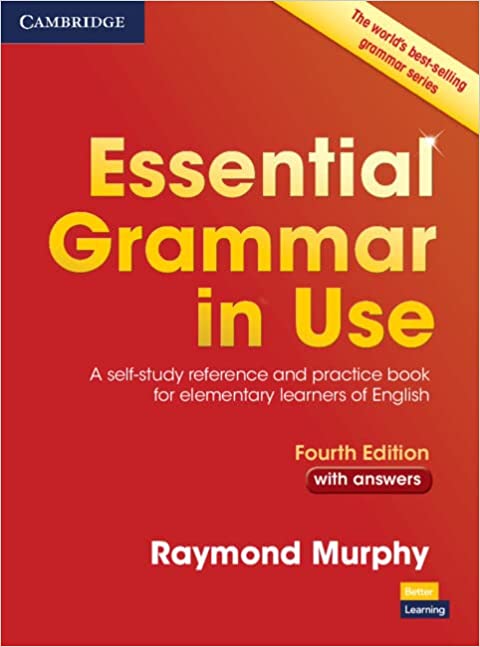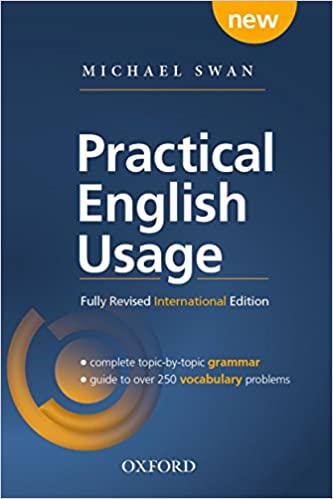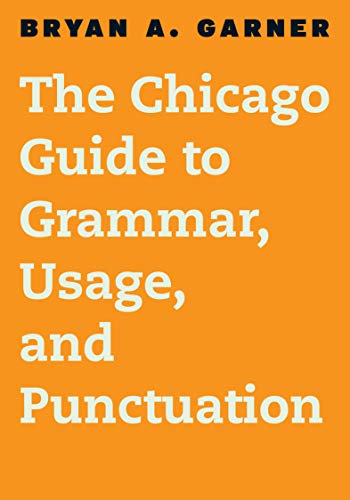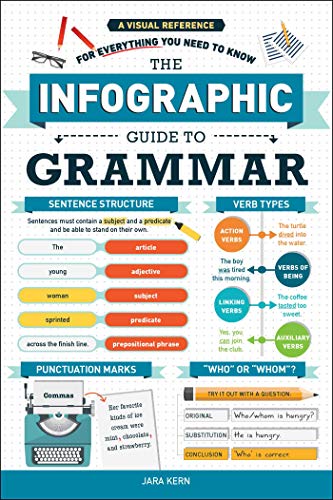When you buy via links on our site, we may earn a commission. Learn more.
Let’s face it: English grammar can be tricky. From irregular verb tenses, to long lists of exceptions to rules, to peculiar word orders, English is riddled with grammatical subtleties that can confound learners of any level.
Fortunately, as we’ll see in this article, by diligently studying the language’s foundations–its grammar–and by reading books in general, you’ll be able to learn and improve your English skills more effectively than you might imagine. Then, by continuing to read English and by speaking in the language as often as possible, the grammar will slowly but surely become second nature to you.
In this article, you’ll find our ranking of the best books to learn English grammar according to our review of dozens of the best on the market. Here they are in summary: —
Best Books to Learn English Grammar
Why Grammar Is Important in Learning English
Grammar is an important aspect of understanding the English language because it helps you understand how words are used and arranged to form meaning.
Learning grammar helps you to communicate clearly and effectively, and this allows you to express your ideas and thoughts in a logical and coherent manner. Being aware of the proper grammar rules in English will also help you to understand the written and spoken language of others and can even impact your credibility and professionalism in many settings.
The good news? The more English you read, the more you strengthen your grammar as a byproduct. (And that’s exactly why books are at the centre of our language-learning method here at AcquiSpeak, where you can learn English grammar by reading rich stories with our self-study academy.)
With all that being said, without further ado, let’s get into the list of the best books to learn English grammar: —

1. The Blue Book of Grammar and Punctuation by Jane Straus and Lester Kaufman
Required Level: Beginner to pre-intermediate
Type: Workbook
Best: For beginners, or those brushing up on grammar rules
Advantages
- Beginner friendly.
- A large number of quizzes to practise.
- A popular and highly-regarded book.
Disadvantages
- Poor quality printing and paper.
- Lacks advanced grammar and mechanics.
The Blue Book of Grammar and Punctuation is an excellent companion if you’re looking to improve not only your grammar but also your punctuation skills. Written by the American educator Jane Straus and her husband Lester Kaufman, this comprehensive guide covers a wide range of topics, from the very basics of sentence structure to more advanced subjects such as pronoun-antecedent agreement and the correct use of semicolons.
One of the things we particularly appreciated about this book is its clear and concise explanations. The authors do a good job of breaking down complex concepts and presenting them in an easy-to-understand manner for learners of all levels. We also thought that the plentiful examples provided throughout the book make it an excellent tool for reinforcing the concepts taught. On the downside, however, this book isn’t as comprehensive and grammar-focused as other books in this review: it deals closely with punctuation, spelling, and correct word usage but it neglects many detailed grammatical concepts that would make it worthwhile for advanced learners.
In addition to its thorough coverage of grammar and punctuation, The Blue Book of Grammar and Punctuation also includes a section on common usage errors and a helpful index for quick reference. Overall, we recommend this book to anyone at a beginner or intermediate level looking for a start in English grammar, or for learners of any level (including native speakers) looking to sharpen up their writing skills and increase their overall proficiency in English.

2. English Grammar in Use by Raymond Murphy
Required Level: Any (there are three volumes)
Type: Workbook (with CD)
Best: For in-depth study at any level (there are books for beginner, intermediate, and advanced learners)
Advantages
- Explanations are easy-to-understand but still in-depth and complete.
- Includes CD-ROM with additional exercises and activities.
Disadvantages
- No answer key is included.
- Rather dense, so not ideal for browsing or quick references.
English Grammar in Use is a series of three comprehensive textbooks on English grammar written by Raymond Murphy aimed at elementary, intermediate, and advanced learners respectively. All three books are suitable for learners of English as a second or foreign language and for native speakers. The books are organized into clear, easy-to-understand units that cover many grammatical topics, including verb tenses, modal verbs, conditionals, passive voice, reported speech, and many others. Each unit includes plenty of practice exercises to help readers test their understanding and improve their skills.
One of the best things about the English Grammar in Use series is that it includes a wealth of examples and explanations that are easy to follow. The books also come with CD-ROMs that include additional exercises and interactive grammar activities.
Overall, we think English Grammar in Use is an excellent resource for anyone looking to improve their understanding of English grammar. The three books are well-written and comprehensive, and they’re packed with useful exercises and activities. Whether you are a language learner or a teacher, this book is an invaluable resource that will help you master the complexities of English grammar.

3. Practical English Usage by Michael Swan
Required Level: Upper-intermediate
Type: Workbook
Best: For practical use cases and for in-depth study.
Advantages
- Clear and concise explanations.
- Impressive index and cross-referencing system.
Disadvantages
- Dense, text-heavy format.
- No answer key is included.
Practical English Usage is a comprehensive reference guide to the English language written by TESOL expert Michael Swan. It’s designed for both learners and teachers of English as a second or foreign language, and it focuses on grammatical usage issues that learners might encounter in day-to-day English.
One of the strengths of Practical English Usage is its structure. Each topic is explained in a straightforward manner, with plenty of examples to illustrate the points being made. The book is also organized into easy-to-navigate sections, making it easy to find the information you need. Another big plus, in our opinion, is the inclusion of a comprehensive index and cross-referencing system, which allows readers to quickly find specific topics or issues. The book also includes exercises and activities to help readers test their understanding and improve their skills.
However, one potential downside of Practical English Usage is that it is a dense, text-heavy resource, which means it may not be the most engaging or user-friendly way to learn for some students. Additionally, the book doesn’t have an answer key, so readers must find their own way to proof-check their work.
Overall, Practical English Usage is a valuable resource for learners and teachers of English, providing clear and concise explanations in a relevant and practical manner. While it may not be the most exciting resource visually, it is nevertheless a reliable and comprehensive guide to the English language, especially if you’re looking for good instruction on using practical, day-to-day language.

4. The Chicago Guide to Grammar, Usage, and Punctuation by Bryan A. Garner
Required Level: Advanced
Type: Manual
Best: For serious learners of English grammar
Advantages
- Extremely in-depth and thorough.
- Goes beyond grammar to sentence structure, word usage, punctuation, logic, and rhetoric.
- Highly-regarded author.
Disadvantages
- Dense, traditional approach that’s not suitable for all kinds of learners.
The Chicago Guide to Grammar, Usage, and Punctuation by the prolific American lawyer, grammarian, and lexicographer Bryan A. Garner is a comprehensive guide to the intricacies of the English language. The book is well-organized and easy to navigate, making it a great resource for both language enthusiasts and professionals alike.
One of the book’s strengths is its clear and concise explanations of grammar and usage rules. Garner does a great job of breaking down complex concepts into easily digestible chunks, making them accessible to readers of all skill levels (though most beginners will be a bit out of their depth). Additionally, the book is filled with helpful examples and exercises, allowing readers to put their newfound knowledge into practice.
However, in our opinion, the book can be dense and require multiple readings to fully grasp the material. Additionally, it’s also worth keeping in mind that the book’s focus is on traditional grammar rules, which may not align with more modern approaches to grammar instruction (though this is largely a matter of preference rather than content).
Overall, The Chicago Guide to Grammar, Usage, and Punctuation is an excellent resource for serious learners looking to improve their understanding of English and its underlying grammar and mechanics. It’s not only a great reference for learners but also for writers, editors, and teachers, providing a traditional, comprehensive and well-organized guide to grammar and punctuation.

5. The Infographic Guide to Grammar by Jara Kern
Required Level: Pre-intermediate
Type: Infographic book
Best: For learning English grammar visually
Advantages
- Visually appealing graphics.
- Engaging and clear explanations.
Disadvantages
- Not suitable for advanced learners.
- No answer key is included.
The Infographic Guide to Grammar is a visually appealing and engaging resource for learners of English as a second or foreign language, written by Jara Kern. The book uses a variety of infographic illustrations to explain a wide range of grammatical topics, including verb tenses, subject-verb agreement, and punctuation.
One of the best things about The Infographic Guide to Grammar is its use of colourful and visually appealing graphics to explain complex grammatical concepts in an easy-to-understand manner. The book is also well-organized and easy to navigate, with each chapter covering a specific grammatical topic. Another big advantage, in our opinion, is the inclusion of exercises and activities throughout the book, allowing learners to test their understanding and improve their skills. The book also includes a helpful index, making it easy to find specific topics or issues.
However, one (potential) downside of The Infographic Guide to Grammar is that it isn’t as comprehensive as the other grammar resources we explored above. It also doesn’t come with an answer key, so readers must find their own way to check their work.
Overall, The Infographic Guide to Grammar is a valuable resource for learners of English who are looking for a visually appealing and engaging way to learn grammar. Its use of infographic illustrations and helpful exercises make it a fun and effective way to improve your understanding of the English language.
What Are the Best Book to Improve Grammar?
To sum up, if we were to select just three books out of the 10 above as the best books of all to improve your English grammar, then they’d be the following:
- The Blue Book of Grammar and Punctuation: Best workbook for beginners.
- The Chicago Guide to Grammar, Usage, and Punctuation: Best manual for serious learners.
- English Grammar in Use: Best in-depth series.
If you’re interested in English vocabulary, take a look at our picks for the best English vocabulary books to see our specific recommendations there instead.
Tips to Improve Your Grammar
Here are a few final tips for using books to help you improve your grammar:
- Grammar books can be helpful tools, but they aren’t a magic solution. You’ll need to put in effort, ideally every day, to see meaningful progress.
- Practice speaking English as much as you can. Conversing with native speakers can be especially helpful.
- Make English a daily habit, ideally for one hour or more. Consistency is key
And most importantly: keep motivated, and keep practising. With patience and the right habits, you will improve your grammar skills beyond what you might imagine!



